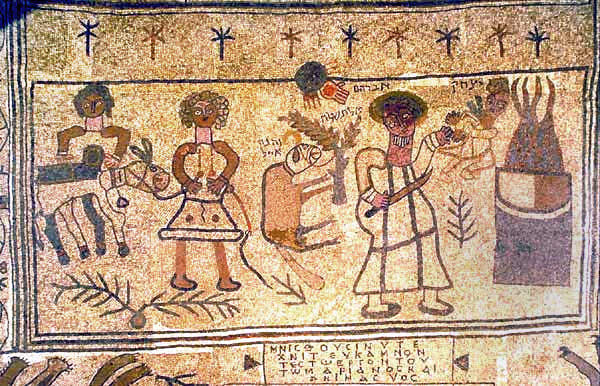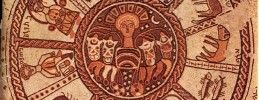Bet Alfa Synagogue
December 25th 2014
Travel back in time and the reign of the Emperor Justinian, when the Jews in Palestine were in a minority amongst other cultures. Even their synagogues looked a bit like churches, with mosaic floors decorated with foreign images.
Nothing is known about the identity of the community that built the Beit Alfa Synagogue. In fact, its discovery was a fortuitous accident. Kibbutz members who were digging a ditch for irrigation stumbled upon it in 1928. All the information we have is on what remains of the synagogue inscriptions. An Aramaic inscription tells us that the synagogue was built during the reign of Justinian I and funded by communal donations. A Greek inscription thanks “Marianos and his son Hanina” for their artisan work. These two personalities are mentioned on the nearby Beit Shean Synagogue as well.
A visit to Beit Alfa also includes an audiovisual presentation on daily life in an ancient village and the process of creating mosaics. The site is wheelchair accessible and housed in an air-conditioned hall, so it can be visited even on the hottest days.
The floor of the Beit Alfa Synagogue is most famous for its large Zodiac wheel. The Zodiac, originally a Persian symbol, was “converted” by the Jews of the Byzantine period and infused with Jewish meaning. Leo became the royal seal of King David and Gemini became Cane and Abel. The vibrantly colorful Zodiac wheel surrounds the Greco-Roman sun god, Helios. Helios is riding a fiery chariot and crowned with sun rays.
 The northern panel of the mosaic shows the famous biblical scene of the Binding of Isaac. The mosaic depicts the moment before God stops Abraham from sacrificing Isaac. Abraham is shown dangling Isaac over the altar, while the ram substitute waits nearby.
The northern panel of the mosaic shows the famous biblical scene of the Binding of Isaac. The mosaic depicts the moment before God stops Abraham from sacrificing Isaac. Abraham is shown dangling Isaac over the altar, while the ram substitute waits nearby.
The southern panel features a depiction of a synagogue, complete with a Torah shrine flanked by two roaring lions and a seven-branched menorah. Some scholars believe that the mosaic is a rendering of the actual Beit Alfa Synagogue as it looked in the Byzantine period.












